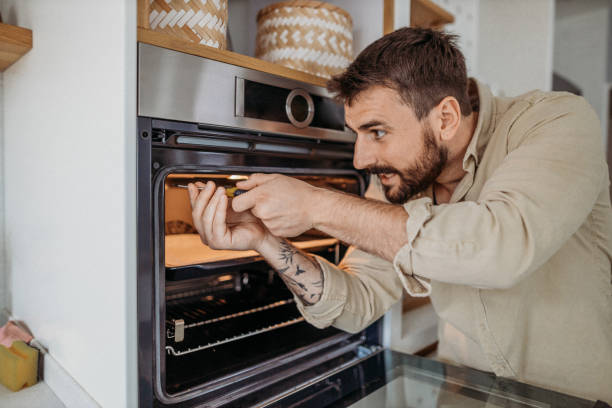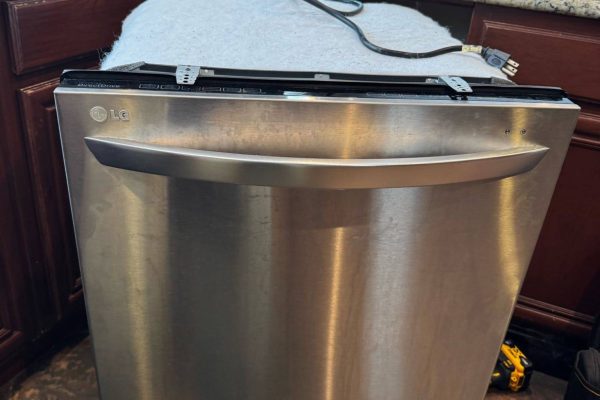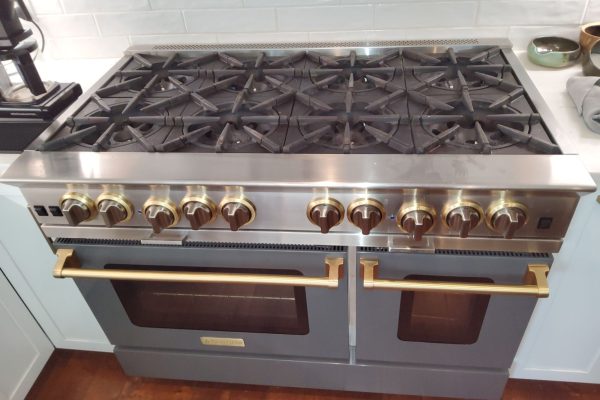The heating elements in your oven are essential components that facilitate the cooking process by generating the necessary heat for baking, roasting, and broiling. However, problems with heating elements, such as coils or gas burners, can disrupt the oven’s performance and affect cooking results. In this comprehensive guide, we’ll explore common issues with oven heating elements, their causes, and practical solutions for efficient repair and maintenance, ensuring your oven operates smoothly for all your culinary endeavors.
Identifying Common Oven Heating Element Problems
Uneven Heating:
Uneven heating is a prevalent issue in ovens that can result from damaged or malfunctioning heating elements. You may notice that certain areas of your food cook faster or slower than others, leading to inconsistent cooking results. Uneven heating can occur due to uneven distribution of heat from the heating elements, damaged coils, or improper positioning of the food within the oven.
No Heat:
If your oven fails to produce any heat when turned on, it indicates a problem with the heating elements or the oven’s electrical components. This issue can be caused by a variety of factors, including a faulty heating element, a blown fuse or tripped circuit breaker, or a malfunctioning temperature sensor. Without heat, the oven will be unable to cook food properly, requiring immediate attention and repair.
Inconsistent Temperature:
Inconsistent temperature is another common problem associated with oven heating elements, leading to unpredictable cooking outcomes. You may observe fluctuations in temperature readings or difficulty maintaining a consistent temperature throughout the cooking process. Inconsistent temperature can result from issues such as a malfunctioning thermostat, worn-out heating elements, or poor insulation within the oven cavity.
Excessive Heating:
Excessive heating, or overheating, occurs when the oven reaches temperatures higher than the set temperature, posing a risk of burning or overcooking food. This problem can be caused by a malfunctioning thermostat, a faulty temperature sensor, or a damaged heating element that fails to regulate heat properly. Overheating can also be a safety hazard, potentially leading to fire or damage to the oven.
Troubleshooting and Solutions
Check Heating Element for Damage:
Inspect the heating elements, whether coils or gas burners, for signs of damage, such as cracks, breaks, or discoloration. Damaged heating elements should be replaced promptly to restore proper functionality and prevent further issues. If you notice any visible damage, disconnect the power supply to the oven and consult a professional technician for replacement.
Test Electrical Connections:
Ensure that the electrical connections to the heating elements are secure and free of corrosion or damage. Loose or corroded connections can impede the flow of electricity to the heating elements, resulting in insufficient heat output or complete failure. Tighten any loose connections and clean corrosion using a wire brush or sandpaper to improve conductivity.
Check Temperature Sensor and Thermostat:
Verify the accuracy of the oven’s temperature sensor and thermostat by conducting a temperature calibration test. Use an oven thermometer to compare the actual temperature inside the oven with the set temperature. If there is a discrepancy, recalibrate the thermostat according to the manufacturer’s instructions or replace the temperature sensor if it is faulty.
Clean Oven Interior:
Regularly clean the interior of the oven, including the heating elements, to remove accumulated grease, food residue, and debris. Dirty heating elements can impede heat transfer and airflow, leading to uneven heating or overheating issues. Use a non-abrasive cleaner and a soft brush or sponge to clean the heating elements thoroughly, taking care not to damage or dislodge them.
Replace Worn-Out Heating Elements:
If the heating elements are worn-out or damaged beyond repair, they should be replaced with new ones to restore proper heating performance. Consult the oven’s user manual or seek professional assistance to identify the correct replacement parts for your specific oven model. Follow the manufacturer’s instructions carefully when installing the new heating elements to ensure proper operation and safety.
Inspect Insulation and Seals:
Check the insulation and seals around the oven door and cavity for signs of wear, damage, or deterioration. Damaged insulation or seals can compromise the oven’s ability to maintain consistent temperature levels and heat distribution. Replace any worn-out insulation or seals to improve energy efficiency and cooking performance.
Perform Regular Maintenance:
Implement a routine maintenance schedule to keep your oven’s heating elements in optimal condition. Clean the heating elements, oven interior, and ventilation system regularly to prevent grease buildup, airflow obstructions, and other issues that can affect heating performance. Additionally, schedule periodic inspections and tune-ups by a qualified technician to identify and address any potential problems proactively.
Maintaining properly functioning heating elements is essential for ensuring the efficient operation and performance of your oven. By identifying common heating element problems, troubleshooting underlying issues, and implementing effective solutions, you can keep your oven in top condition for all your cooking needs. Whether it’s replacing worn-out heating elements, calibrating the thermostat, or cleaning the oven interior, proactive maintenance and timely repairs are key to enjoying consistent and reliable cooking results.
Count on our services as the dependable solution for resolving household appliance issues! If your appliances need repair, fret not – reach out to Oceanside Appliance Service Center, and we’ll help eliminate any inconvenience.
With extensive experience in repairing household appliances of diverse brands and models, our highly qualified technicians possess profound knowledge and expertise in handling refrigerators, washing machines, dryers, dishwashers, stoves, ovens, and more.
We ensure a professional approach to every task, using only original spare parts for repairs. Our primary goal is to restore your household appliances to optimal condition.
Contact us:


